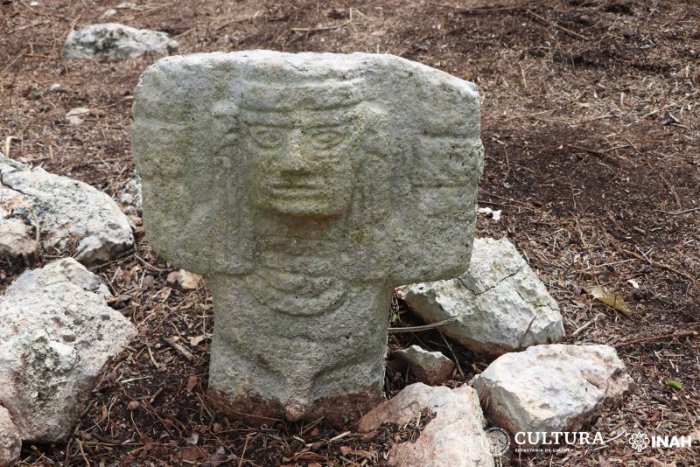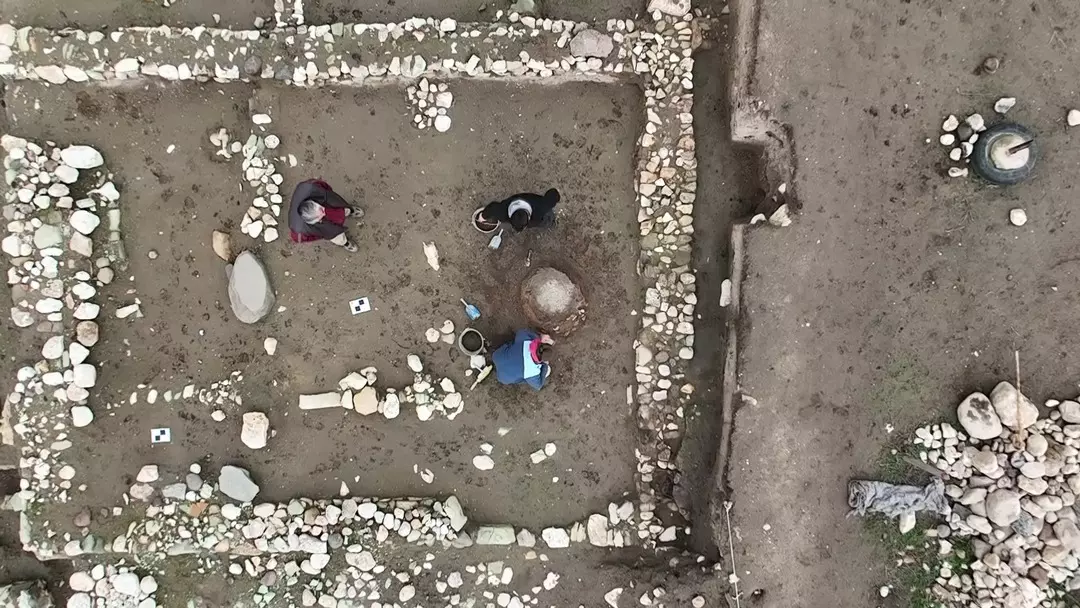On the Yucatán Peninsula of Mexico, workers constructing a road that would lead to a new section of Chichén Itzá made the discovery of an ancient Atlantean sculpture with uplifted arms.
The most popular archeological site in Mexico is Chichen Itza, a UNESCO World Heritage Site. Chichen Itza, renowned for its amazing buildings like the Kukulkan Pyramid, the Temple of the Warriors, and the Ball Court, presents a special chance to go back in time and learn about the history of the pre-Maya.
Discoveries made by archaeologists at Chichen Itza continue to expand our understanding of the prehistoric Maya civilisation.
Scientists from the INAH (Instituto Nacional de Antropologia e Historia) recently reported the discovery of a 90 cm tall ancient Atlantean sculpture at a news briefing.
The location where the Atlantean sculpture was unearthed. Image credit: INAH
A number of evidence points to a significant common foundation between the Mayan cultures of central and northwestern central Mexico at roughly the same dates, between AD 800 and 1200, even later, and those at Chichén Itzá in the Terminal Classic and Early Postclassic periods. The newly discovered sculpture, in association with a housing complex, is one more example of this.
The find resembles sculptures of the Atlantean variety, according to Diego Prieto Hernández, general director of the INAH. The male character wears a headband, a pectoral composed of four rows of jade beads, long earmuffs, and bracelets, and is seen with his arms raised and clutching something. Additionally, Hernández recommended paying attention to "the features of his face, which link him, stylistically, to Huastec evocations."
According to Prieto Hernández, these sculptures were a part of the altars containing stone blocks that were cut in the shape of a table because of their size (90 centimeters high and 45 centimeters broad), which were components found in ceremonial buildings.
In the Yucatan Temple of the Warriors in the Maya-Toltec city of Chichen Itza, Mexico, Atlantean statues have been discovered.
The statues were given the label "Atlantean" because of their resemblance to weight-bearing figures like Atlas, a Titan deity of endurance from Greek mythology. Atlas was in charge of keeping the world's weight constant.
The Atlantean figures in the historic Toltec city of Tula are even larger than the recently discovered sculpture at Chichen Itza. The mysterious, enormous basalt figures of Tula are over 15 feet (4.5 meters) tall, as was previously stated on the Ancient pages. They are one meter in diameter and weigh between 8 and 8.5 tons.
Atlantean statues Of Tula are four anthropomorphic characters representing ancient warriors who followed Mesoamerican god king Quetzalcoatl, a feathered serpent. Image source
They also wear headdresses made of snakeskin and feathers, wear breastplates shaped like butterflies, and carry spear throwers and a supply of spears. They have a shield with the sun's seal on the back.
It is important to remember that the ancient Atlantean Tula statues depict warriors, whereas the most recent find was made in the form of a creature connected to rituals and festivities.
In addition, Diego Prieto Hernández of INAH discussed the Program for the Improvement of Archaeological Zones (Promeza) in 27 sites nearby the megaproject and how these archaeological discoveries are related to the Mayan Train rescue mission.










